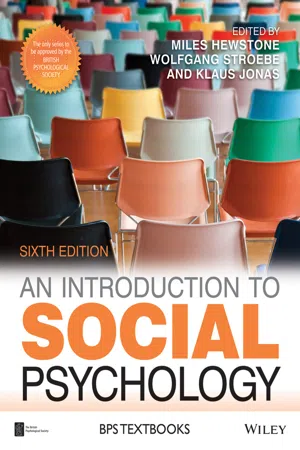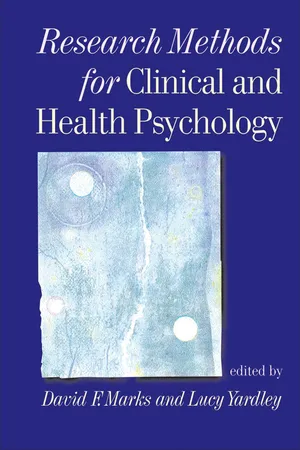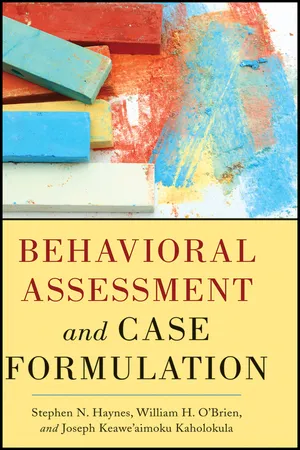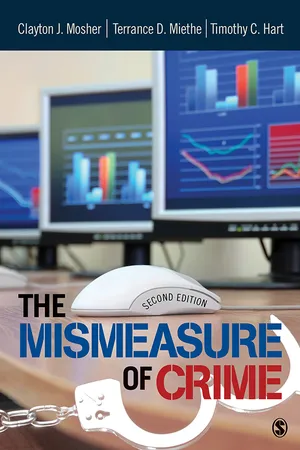Psychology
Self-Report Techniques
Self-report techniques in psychology refer to methods of gathering data directly from individuals about their own thoughts, feelings, and behaviors. These techniques often involve questionnaires, surveys, interviews, or self-assessment scales, and are used to gain insight into subjective experiences and perceptions. Self-report data can provide valuable information for understanding individual differences and psychological phenomena.
Written by Perlego with AI-assistance
Related key terms
Related key terms
1 of 4
Related key terms
1 of 3
5 Key excerpts on "Self-Report Techniques"
- eBook - ePub
Research Methods in Clinical Psychology
An Introduction for Students and Practitioners
- Chris Barker, Nancy Pistrang, Robert Elliott(Authors)
- 2015(Publication Date)
- Wiley-Blackwell(Publisher)
6 Self-Report MethodsKEY POINTS IN THIS CHAPTER
- Self-report methods, such as interviews and questionnaires, ask the person for information directly.
- Their advantage is that they give you the person’s own perspective; their disadvantage is that there are potential validity problems (e.g., people may deceive themselves or others).
- The main qualitative self-report approach is the semi-structured interview.
- Qualitative interviewing is a distinct skill, related to but different from clinical interviewing.
- The main quantitative self-report approach is the written questionnaire, but structured interviews and internet surveys are also used.
- There are several principles to follow in constructing quantitative self-report instruments.
- Response sets, such as acquiescence and social desirability, refer to tendencies to respond to items independently of their content. They need to be taken into account when designing and interpreting self-report measures.
When you want to know something about a person, the most natural thing is to ask. Research methods that take the approach of asking the person directly are known as self-report methods, and mainly take the form of interviews, questionnaires, and rating scales. They are the most commonly used type of measure in the social sciences in general and in clinical psychology in particular.For example, suppose that you have set up a new counseling service for adolescents and want to evaluate its effectiveness. You ask the service users to rate the severity of their problems before and after counseling and how satisfied they are, using standardized instruments. You also use a semi-structured interview to assess the adolescents’ overall experience of the service, including what they feel they has changed, what they found helpful, and any specific criticisms they had of it. Client satisfaction studies and clinical effectiveness studies - eBook - ePub
- Miles Hewstone, Wolfgang Stroebe, Klaus Jonas, Miles Hewstone, Wolfgang Stroebe, Klaus Jonas(Authors)
- 2016(Publication Date)
- BPS Blackwell(Publisher)
Self-report methods are usually quicker, cheaper and easier to use than observational methods. The researcher does not have to contrive a laboratory setting or find a natural setting in which to observe a behavioural response; furthermore, there is typically no need to train observers or to use recording equipment, because self-reports are usually recorded by the participant. Finally, as noted above, some of the variables that are of most significance to social psychologists are not directly observable. For these reasons, self-report methods are very common in social psychological research, and it is not unusual for studies to depend exclusively on self-report data. There are two principal methods of collecting self-report data: the questionnaire and the interview. In the questionnaire method, participants are given a set of questions, along with instructions on how to record their answers (nowadays, this is often done by means of web-based surveys too). In the interview method, questions are put to the participant by an interviewer, who then records the participant’s responses. Interviewing is particularly useful when there is reason to believe that the questions might be difficult to understand without clarification. A tactful and sensitive interviewer should be able to establish rapport and ensure that the respondent fully comprehends a question before answering. Another advantage of interviewing is that interviews can vary in terms of how ‘structured’ they are. Structured interviews follow a schedule that is fixed in terms of the number, wording and order of questions, and can involve asking participants to respond using questionnaire-style response options. In ‘semi-structured’ interviews, the interviewer has a pre-defined series of topics to be covered in the interview, but he or she is able to vary the specific questions that are asked so that they are relevant to the unfolding discussion - David F Marks, Lucy Yardley, David F Marks, Lucy Yardley(Authors)
- 2003(Publication Date)
- SAGE Publications Ltd(Publisher)
acceptability to the group under study. These matters are essential, and the final assessment of acceptability will be aided by a pilot study with a small number of representatives typical of the respondents who are expected to participate in your main study. The instrument can be fine-tuned following the feedback from the pilot sample. For example, the font size may be too small for people who are older or who have visual impairments, the instructions may be unclear, or the consent form insufficiently concise. For members of ethnic minorities or refugees, it may be necessary to produce the questionnaire in different languages, which will have implications for the validity, reliability and sensitivity of the questionnaire (see below). Note that a questionnaire may be reliable and valid for one population but not another. For example, a questionnaire designed to measure health status in cancer patients may be insensitive to smaller variations in health status in a general population sample.Questionnaire content
One of the easiest and most practical ways of assessing a person’s feelings, attitudes and behaviours is to ask them, either in interview or self-administered questionnaire.Self-reportsare therefore a primary means of obtaining psychological data. Self-reports are related to the processes of introspection and communication, which are controversial in psychology because they may be affected by all kinds of subjective and social processes that are difficult to measure and control. Self-reports are often combined with objective measures of behaviour taken by direct observation or by using neurodiagnostic techniques, such as fMRI, PET scan, CAT scan, P300, EEG, biofeedback, electromyogram or other psychophysiological methods of brain imaging. (The latter techniques are beyond the scope of this book; a useful source is Cabeza & Kingstone, 2001.)The fact remains that many of the processes that clinicians are interested in are subjective experiences and so it is practically impossible to avoid the use of the self-report. For example, feelings of pain, depression, anxiety, stress, coping, recovery, energy, fatigue, wellbeing, satisfaction, social support, self-esteem and self-efficacy are all subjectively defined experiences, which can only be assessed by self-report. Thus the century-long debate in psychology about the use of self-reports as data has had little bearing on the everyday necessity of using such data in health care diagnosis, assessment and research. However, there is a serious concern about the best ways of obtaining such data in the most reliable, valid and sensitive fashion. Examples of content from some important and frequently used questionnaires are given below.- eBook - ePub
- Stephen N. Haynes, William O'Brien, Joseph Kaholokula(Authors)
- 2011(Publication Date)
- Wiley(Publisher)
Chapter 8 Self-Report Methods in Behavioral Assessment OVERVIEW OF SELF-REPORT BEHAVIORAL ASSESSMENT METHODS AND STRATEGIESThe case of Mrs. Anderson that we describe in Chapter 7 illustrates how behavioral assessment methods and strategies are consistent with the principles of the behavioral assessment paradigm and the functional analysis. Behavioral assessment emphasizes the use of minimally inferential and clearly defined measures of behavior and related events that have well-developed psychometric properties, are sensitive to change, and appropriate for the characteristics of an individual client and the assessment context. Additionally, the behavioral assessment paradigm encourages the measurement of multiple response modes, dimensions, and attributes of a behavior, using a level of specificity that is most applicable to the problem behavior under investigation and the goals of the assessment. There is an assumption that the most accurate and valid information will be obtained when assessments include multiple informants, multiple measurement methods, and data collection in multiple settings.In this chapter, we discuss a subset of behavioral assessment methods: those that rely on self-report. There are several types of self-report methods, including behavioral interviews, questionnaires, and self-monitoring using a daily log or an electronic diary. We refer the reader to Hersen (2006a, 2006b), Fernández-Ballesteros (2004), and Fernández-Ballesteros and Botella (2008) for an elaboration on the self-report methods discussed in this chapter.Self-report assessment methods are used across all psychological assessment paradigms because they can easily be administrated in most settings, are flexible in their clinical applicability and utility, and are relatively cost- and time-efficient compared to direct observational and psychophysiological methods of assessment. Additionally, self-report methods are the only way that a client’s cognitive and emotional experiences and subjective appraisal of causal relations can be ascertained. Although there are self-report assessment methods that assess personality traits and unconscious processes, behavioral assessment focuses on more specific and measurable behaviors and events that allow for the specification of a client’s behavior problems and of relevant functional relations. - eBook - ePub
- Clayton Mosher, Terance D. Miethe, Timothy Christopher Hart(Authors)
- 2010(Publication Date)
- SAGE Publications, Inc(Publisher)
SELF-REPORT STUDIESRespondents are a tricky bunch, and they do not always behave the way a researcher would wish or expect. In fact, surveys would be far more reliable without them.—Coleman & Moynihan (1996, p. 77)S elf-report studies of crime were developed in the 1940s and 1950s, largely in response to concerns among criminologists that official measures of crime were systematically biased and provided a distorted picture of the nature and extent of crime and its correlates.One of the primary advantages of self-report studies is that the information individuals provide regarding their behavior is not filtered through any official or judicial process. The criminal justice funnel, which illustrates how, at each stage of the system, fewer and fewer illegal behaviors are siphoned off for official crime counts, does not operate with respect to self-report data.However, what individuals tell us about their behavior may or may not be a reliable and valid source for determining how involved they are in criminal activity. Memories of events—even of ones as dramatic as criminal episodes— may be fuzzy rather than clear, especially when it comes to recollecting the time period in which they occurred or the sequence of their occurrence. The questions that researchers ask may be phrased in ways that are different from the way people think of their behavior. For example, asking “In the past six months, have you abused or aggressed against a family member?” may elicit a different response than “In the past six months, have you slapped, hit, or punched anyone in your house?” Even with good nonjudgmental questions,however, respondents may be reluctant to answer fully and truthfully—at least partially because of the fact that they are being asked to admit to behaviors that might result in their arrest if the actions became known to authorities.One purpose of this chapter is to make you a savvy consumer, as well as evaluator, of self-report measures of crime. Because of its importance to both self-report and victimization data, we begin with a brief discussion of survey methodology. We then review the methodology and findings of some of the more prominent self-report studies, including the National Youth Survey (NYS), the National Longitudinal Study of Adolescent Health (Add Health), the Monitoring the Future (MTF) Survey, and the National Household Survey on Drug Abuse (NHSDA, now known as the National Survey on Drug Use and Health [NSDUH]). This is followed by a review of a prominent and enduring debate in the discipline of criminology regarding the connection between social class and crime, a debate that led to further refinements and improvements in self-report methodology. We then discuss self-report data from known offenders, which have provided particular insights into the crime patterns of individuals who have been apprehended by the criminal justice system. The chapter concludes with an examination of studies focusing on the reliability of self-reported data on drug use.
Index pages curate the most relevant extracts from our library of academic textbooks. They’ve been created using an in-house natural language model (NLM), each adding context and meaning to key research topics.
Explore more topic indexes
Explore more topic indexes
1 of 6
Explore more topic indexes
1 of 4




